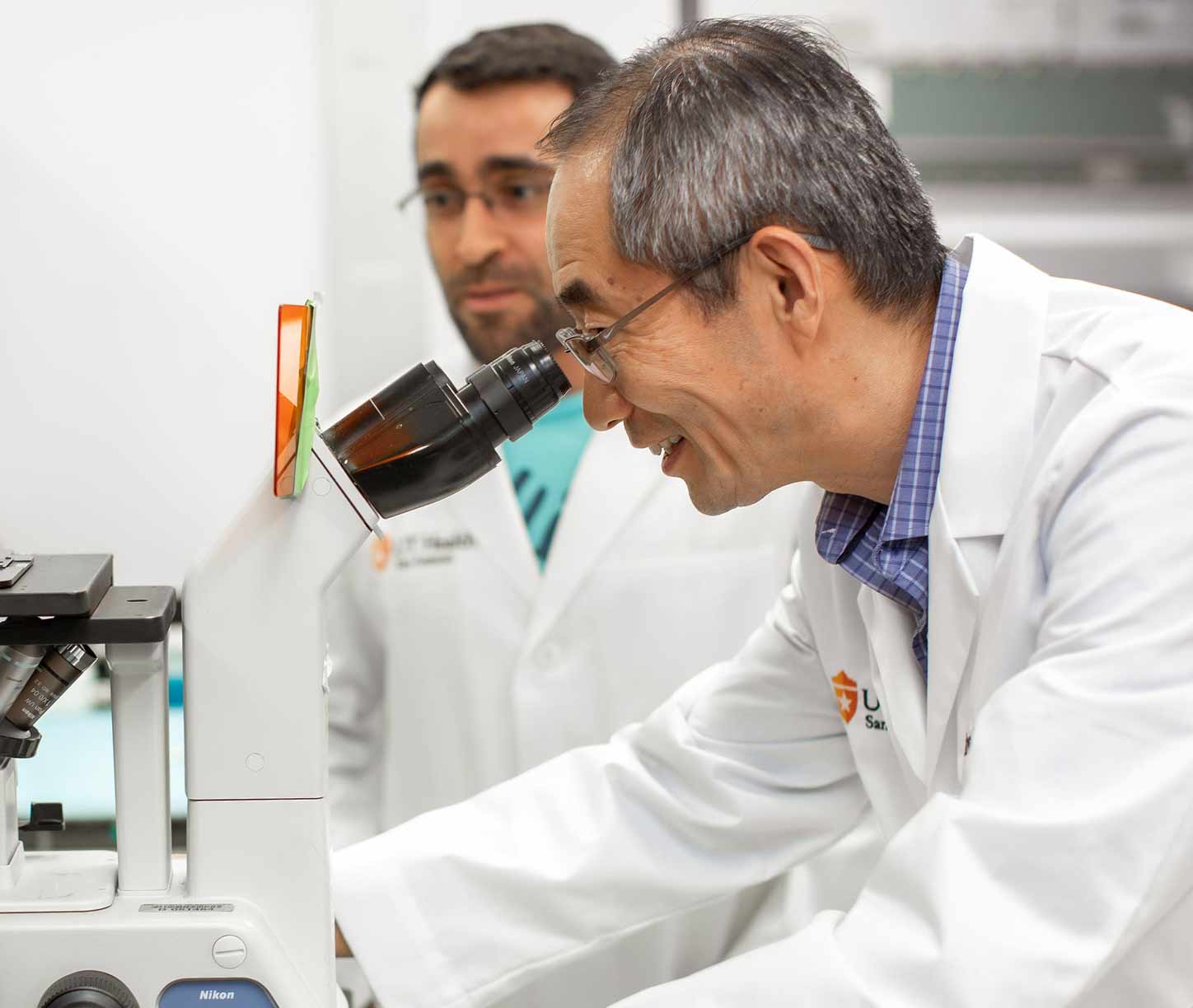Neurofibromatosis

Why choose us for neurofibromatosis care?
Neurofibromatosis is a rare genetic condition that can cause brain, spine and other tumors as well as other health problems. At Mays Cancer Center, you can access specialized pediatric care from a team of doctors with neurofibromatosis expertise close to home.
Neurofibromatosis can affect children and adults in many different ways. Our pediatric team includes neurologists, ophthalmologists, chronic pain specialists and surgeons who have experience treating children of all ages with this complex condition.
We coordinate tests and treatments, making it easier for you to manage how this condition affects your child. Our research program enables us to offer eligible patients leading neurofibromatosis treatments that are only available in clinical trials.
Read more about our neurofibromatosis program.
What you need to know about neurofibromatosis
- Neurofibromatosis significantly increases a child’s risk for developing brain tumors. The condition can also lead to tumors along the spine or other areas. These tumors arise out of nerve tissue and may be benign or cancerous.
- Children experience neurofibromatosis differently. Neurofibromatosis may affect a child’s vision, hearing, growth or learning. It may cause minor or less obvious symptoms. Some adults may not even realize they have it.
- Abnormal gene changes cause neurofibromatosis. It is often passed down through families. Our genetic counselors can help children and families identify their risk and manage their long-term health.
- Children with neurofibromatosis need lifelong care. We help families coordinate tests and therapies among multiple specialists, helping you access the care your child needs.
How to talk to your doctor about neurofibromatosis
If your child has neurofibromatosis, you may have many questions. Our team is here to give you honest, straightforward questions and support your family.
We explain how this condition may affect your child’s health and the health of other family members. We can also guide you to helpful resources available in the community.
You might want to ask your doctor about:
- Additional testing that may be necessary to assess your child’s risk or monitor their long-term health
- Diagnosis, including what type of neurofibromatosis your child has and how it could affect them in the years to come
- Genetic testing to determine which gene mutations run in your family and who else in your family may be at risk
- Treatments, if needed, which may include medications or surgery, now or in the future
- Support, including how our partnership with the Texas Neurofibromatosis Foundation® can help you and your family cope with a neurofibromatosis diagnosis
Types
Two main types of neurofibromatosis affect children:
- Neurofibromatosis type 1 results from a genetic mutation on chromosome 17. It is the most common type by far and is mostly diagnosed when children are young.
- Neurofibromatosis type 2 is a rare form of the condition, caused by a genetic change on chromosome 22. Noticeable symptoms usually develop in the teen and young adult years.


 Close
Close